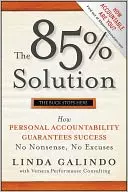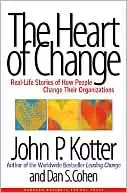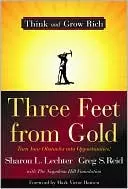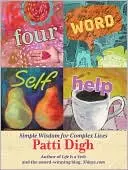Our 7th Annual Summer Book Review!

As someone who ostensibly thinks for a living, I imagine you're probably wondering about the title of this article. True, the work I do as a management consultant requires detailed knowledge of information technology, the ability to review processes, and strong analytical skills – all heavy "thinking" activities. But in actuality, my real work is leading my management consulting firm, and that requires a much different set of skills.
While I have always been fairly good at organizing work and leading people, I've consciously worked to improve my "softer" skills over the past few years. These development efforts have revealed a consistent theme – the important differences between thinking and feeling, or between head and heart.
While thinking will get you started in many professions, advancing to higher levels requires the ability to positively influence the feelings of others. Whether it is helping prospective clients feel the passion our firm would bring to their work, or rallying my staff to complete an extraordinarily difficult project in a scant five weeks, or providing suggestions for improvement in ways they will be readily received – all require the ability to genuinely and effectively touch the hearts of others.
In his preface to The Heart of Change, John Kotter admirably summarizes this theme:
During my lifetime, the emphasis in books and formal educational settings has been overwhelmingly geared toward analysis and thought. Feelings were seen as "soft" and talked about in a very fuzzy manner. More often than not, emotions were seen as a distraction (hence, "Don't be so emotional!"). Although very recently this has begun to change, I can't remember a time when I heard a concrete, nonmystical discussion of the sort written here about how change leaders ... influence feelings and change behavior. (pages x and xi)
The four books in this year's June book review might appear quite different at first, yet the authors' approach is very similar – they all use highly engaging stories to illustrate key lessons for:
- leading self,
- leading others,
- motivating self and others, and
- taking care of self.
In all four books, the authors keep the message simple and tell compelling stories – because they know that thinking is overrated and feeling is underrated.
"Leading Self"
The 85% Solution: How Personal Accountability Guarantees Success – No Nonsense, No Excuses, by Linda Galindo
Leadership author and consultant John Maxwell frequently says in his teaching lessons, "The person I have the most trouble leading is myself." Amen!! How can you address this? Linda's answer – stop making excuses and start practicing personal accountability. This highly readable book focuses on the three key elements of personal accountability:
- Personal responsibility is a "before-the-fact" mind-set of personal ownership and commitment to a result. (page 58)
- Self-empowerment is taking the actions – and the risks – that you need in order to ensure that you achieve the results you desire. (page 147)
- Being accountable for your results requires an "after-the-fact" mindset of being willing to answer for the outcomes resulting from your choices, behaviors, and actions. (page 225)
Can effectively leading yourself be as simple as changing your mindset in these three areas? Absolutely! Can this change be incredibly hard? Of course! Early in the book, Linda shares her own wakeup call to practice personal accountability:
Once upon a time, I was the Queen of Victims, with a shiny scepter, a sparkling crown, and a plush velvet robe, walking up and down the runway of Poor Me. Life didn't work for me. My boss was a jerk. My parents didn't encourage me. My husband was controlling. I got divorced. I complained and whined.
One day, a good and smart friend put a stunningly quick stop to it by asking me a revealing question that stung me like a slap in the face.
"Have you ever noticed that all the bad things you complain about happened when you were in the room? Have you ever considered that you might have something to do with your own rotten luck?"
I hadn't. (page 11)
Linda writes in a personable, sassy, and straightforward style, and liberally incorporates stories from her personal life and client work. How does she explain her effect on others?
My husband says my job is to make grown men cry.... They weep like babies. My job isn't to make them cry, of course; it's simply to hold them accountable. It's being held accountable that makes them cry.
Being held accountable upsets most people. Being accountable upsets most people. Does it upset you? (page 159)
Is being accountable something you want to do? Near the end of the book, Linda reminds us that personal accountability is a choice – and it might not be a choice you want to make:
Committing to accountability is hard work. When you choose accountability, you close that huge gap between what you say you are responsible for and what you do....
Choosing accountability takes courage. Choosing accountability takes change. Some of these changes might be uncomfortable. Some might be time consuming. Some might create extra work for you. (page 165)
If you choose to accept this challenge, how do you know where you stand and what areas need development? Linda provides three self-assessments (pages 58, 147, and 225) on the elements of personal accountability – a score of 85% or higher indicates successful application of that element.
The epilogue recaps the downsides when personal accountability is lacking:
You can keep doing what hasn't worked for you in the past if you want to, but it's not going to work for you in the future, either....
A lack of personal accountability is at the heart of chronic stress. It saps us of productivity. It wastes our time. It makes us less satisfied with our jobs, our relationships, and ourselves. (page 231)
Higher productivity? Better time usage? More satisfying jobs and relationships? Feeling better about ourselves? These are wonderful benefits from a simple practice. Too bad few people heed Linda's advice in The 85% Solution, and fewer still live it fully.
"Leading Others"
The Heart of Change: Real-Life Stories of How People Change Their Organizations, by John P. Kotter and Dan S. Cohen
The first two sentences of the opening chapter set the direction of this book and its thesis – "The single most important message in this book is very simple. People change what they do less because they are given analysis that shifts their thinking than because they are shown a truth that influences their feelings." (page 1) This becomes the basis of the core method – See-Feel-Change – used throughout this book.
- By helping people SEE problems, solutions, or progress in the eight-step change process ...
- People help their colleagues FEEL the idea "at a deeper level than surface thinking" (page 11), evoking "a visceral response that reduces emotions that block change and enhances those that support it" (page 11), helping ensure ...
- These emotionally-charged ideas directly CHANGE behavior or reinforce CHANGED behavior.
Why all the fuss about feelings? Why not just tell folks what to do, and expect them to do it? The introduction tackles this issue head on by stating the core problem in successfully achieving changes in operations:
Our main finding, put simply, is that the central issue is never strategy, structure, culture, or systems. All those elements, and others, are important. But the core of the matter is always about changing the behavior of people, and behavior change happens in highly successful situations mostly by speaking to people's feelings. (page x)
By speaking to feelings, a leader – and "leader" is anyone who helps direct or energize the change effort, regardless of formal title – can help influence emotions to overcome barriers to change. What are these emotions and the related behavioral barriers?
- False pride or arrogance leading to complacency.
- Fear or panic resulting in immobilization.
- Anger causing a you-can't-make-me attitude.
- Extreme pessimism yielding hesitation. (all summarized from page 17)
Any of these emotions and behaviors are enough to stop a change effort. The way to address them? Provide "dramatic, vivid visualizations [to] catch people's attention, reducing emotions that undermine a sensible change ... [and increasing] emotions that facilitate a needed change regarding some valid idea – feelings of passion, faith, trust, pride, urgency, hope" (page 181) and also fear, as long as it is quickly converted into any of the other emotions.
At the heart of this book are 34 stories liberally illustrating the eight steps of change – and these stories are highly memorable because they provide concrete examples to back up the point being made. A few of my favorite stories:
- "Gloves on the Boardroom Table" (pages 29 and 30) – To illustrate problems with the purchasing process, a manager had a summer student collect examples of every type of glove bought in the plants. The result? She found 424 different kinds of gloves, tagged each one with the price and plant where it was used (and some plants used the same glove, but one plant paid $5 per pair while another paid $17 for the exact same glove!), and stacked them all on the boardroom table to let the division presidents see one small example of possible improvements in purchasing.
- "The Plane Will Not Move!" (pages 73 through 76) – Industry practice in assembling airplanes had been to move a plane from one position to the next at the scheduled time, regardless of whether or not it was complete or the needed parts had arrived. A new executive, Koz, stood up in a management meeting and announced, "We are not going to move an airplane until it is complete in position. Quality is number one, so that's what we are going to focus on. Until the plane is done and done right, no movement. Period." Employees were stunned, but the sight of planes not moving suddenly changed feelings, and then behaviors. This forced parts to arrive on time, work to be performed to standards, and people to creatively solve problems. Bottom line – the facility was transformed, quality went up, and planes were delivered not only on time, but early!
- "The Street" (pages 155 through 157) – This is an amazing story about how a designer had an idea to convert excess manufacturing space into offices for the plant administrative staff and managers, and also increase the interaction between office workers and line workers. I don't want to spoil the surprise in this story. I encourage you to read the book and enjoy this story yourself!
This book has an excellent discussion of four documents – and their related activities – to help direct action:
- A budget is the financial piece of a plan – it could require a large notebook. Budgeting is a math exercise, number crunching.
- A plan specifies step-by-step how to implement a strategy – it might require a small notebook. Planning is a logical, linear process.
- A strategy shows how to achieve a vision – it will likely fit on 10 pages. Strategizing requires a great deal of information about customers and competitors, along with conceptual skills.
- A vision shows an end state where all the plans and strategies will eventually take you – it can usually fit on one page. Visioning involves trying to see possible futures, having both creative and emotional components. (all summarized from page 68)
Most organizations deal only with incremental change involving planning and budgeting. Such organizations find it hard to implement large-scale change, which also requires strategizing and visioning.
During my career, I've seen or been involved with change efforts at two different not-for-profit organizations. Both did a good job with their mission, both had capable staff and volunteers, and both had strong planning and budgeting processes. One, however, was much better at large-scale change because that group successfully executed the eighth step of change – "Make Change Stick." Two sentences sum up the difference in these two organizations – "Tradition is a powerful force. Leaps into the future can slide back into the past." (page 161) Even if the preceding seven steps of change have been well-implemented, failing to make things stick puts all the prior work at risk. The book has this great analogy:
You may think you have built a sturdy house, yet not notice that the walls are being held in place by the construction crew. Eventually, the crew leaves and gravity takes over. In large-scale change efforts, gravity is the traditional organizational culture. (pages 164 and 165)
Changes can be helped to stick via a new employee orientation process, a structured promotion process, and continuing to use the power of emotions to help remind people of the reasons underlying change.
I thoroughly enjoyed the content of The Heart of Change, and its format – in-chapter stories and sidebar illustrations, along with an outstanding summary of "What Works," "What Does Not Work," and "Stories to Remember" at the end of each chapter – makes the book a useful and excellent reference.
"Motivating Self and Others"
Three Feet From Gold: Turn Your Obstacles Into Opportunities, by Sharon L. Lechter and Greg S. Reid, with The Napoleon Hill Foundation
The title of this book comes from a story mentioned in the Foreword (page xi) and described more fully (pages 21 through 24) to illustrate a key idea: The most common cause of failure is quitting. (page 21)
This book consists of real-life interviews with successful leaders and business persons, woven around a semi-autobiographical story. All of the characters are real, except for three – Buckland, Mia, and David – who were added to make an interesting "business fable" storyline.
Undertaking this project with the support of The Napoleon Hill Foundation, the authors set out to update Napoleon Hill's principles in Think and Grow Rich by talking with today's leaders about "why they didn't give up – through their challenging times." (page xii) Brief biographies of each leader can be found in the back of the book, along with page references where each is mentioned or quoted. While many of these people are well-known – Truett Cathy of Chick-fil-A, Debbie Fields of Mrs. Fields Cookies, Mark Victor Hansen of the Chicken Soup for the Soul series, and Mike Helton of NASCAR – most are much lesser-known. I enjoyed learning about the efforts of Michael Laine in his quest to build a space elevator, and physicist John Schwarz, along with his colleague Dr. Michael Green, in publishing and defending the "Super String Theory" to unify gravity and all the fundamental forces.
Three Feet From Gold is chock full of quotes from actual interviews, as well as key ideas summarized by the main character, Greg. A few stood out for me:
- "A goal is a contract with yourself and should be based less on what you want to do and more on what you promise yourself you'll actually accomplish." (page 34) While this came from fictional character Buckland, I really like this concept, because it perfectly ties into the Personal responsibility – a "before-the-fact" mind-set of personal ownership and commitment to a result – component of another book in this review, The 85% Solution.
- "Point is – the more rejection you can handle, the stronger and more capable you will be when the YES finally comes your way." (page 96) The concept behind this quote from Dr. Tom Haggai, chair and CEO of the IGA supermarket network, has helped keep me going through nearly 22 years of running a management consulting firm – the more "no's" you get, the closer you get to "yes."
- "Success simply comes from going from failure to failure without loss of enthusiasm." (page 103) John Hope Bryant, who started Operation Hope as America's first nonprofit social investment banking organization, is the source of this quote. Anyone who has successfully run an organization through multiple business cycles knows how hard it can be and how many failures and "near misses" there can be in a recession. Yet the enthusiasm of the entrepreneur, executive, or manager is what keeps that individual and those around them going, and keeps mistakes and failures from ever becoming personal.
- "You never feel or remember the blows. You only feel the victory." (page 85) While four-time heavyweight boxing champion Evander Holyfield lived this advice in the ring, it applies in all walks of life. The tough times don't last, and you don't remember how bad things were because you survived and now feel victory over the potential defeat.
A common theme running through many of the interviews is succeeding by being helpful. There were various ways of expressing Zig Ziglar's famous quote – "To get what you want, help enough other people get what they want first!" – which is also in this book. (page 163)
Another common theme is overcoming fear. Some excellent advice for any challenging situation:
- "Act in spite of fear." – Charlie "Tremendous" Jones, author, humorist, and speaker (page 120)
- "Never give in to the fear of what might happen. You've just got to keep on moving." – Debbi Fields (page 150)
- "What's the worst that can happen? Can I handle that? If the answer is 'yes,' then do it!" – Genevieve Bos, creator and founder of Pink magazine for female leaders. (page 170)
Finally, I appreciated having access to many quotes from Napoleon Hill himself, which opened every chapter and were used in other places as well. A few of my favorites:
- "More gold has been mined from the thoughts of men than has ever been taken from the earth." (page 7)
- "Many successful people have found opportunities in failure and adversity that they could not recognize in more favorable circumstances." (page 15)
- "Neglecting to broaden their view has kept some people doing one thing all their lives." (page 27)
- "There are no limitations to the mind except those we acknowledge." (page 125)
- "Success requires no explanations. Failure permits no alibis." (page 141)
- "When you call upon your subconscious mind, you must conduct yourself just as you would if you were already in possession of the material thing that you are demanding." (page 153)
- "Are you waiting for success to arrive, or are you going out to find where it is hiding?" (page 211)
This final quote really resonated with me, especially the need to find success and flush it out of its hiding place. The path to success is generally not obvious, often because it is a completely new path, and thus requires taking a different perspective on an idea, and then applying passion, talent, association with others, action, and faith to ultimately achieve success.
Three Feet From Gold has many different voices, many different takes on the same theme: Don't give up when you feel you're close to achieving your dream. Even if you don't need to hear this theme right now, you will someday. So, go ahead, get this book, read it, and mark it up heavily so you'll be prepared to use it when you feel like giving up.
"Taking Care of Self"
Four Word Self Help: Simple Wisdom for Complex Lives, by Patti Digh
I don't know how else to say it – this is an absolutely charming, delightfully fun book! In the introduction, appropriately titled "Why Just Four Words?" (which, like the book's title, uses only four words), Patti explains how she has simplified her life over the past several years, each time giving up something:
- "Wear only solid clothing" – She gave up clothing with patterns.
- "Drink your coffee black" – No more cream and sugar for her, and no fancy drinks at the coffee shop!
- "Give up toxic people" – Avoid people who bring you down.
She then states her philosophy guiding this book ...
Sure...life is complex – but will complex solutions help? ... The way to solve complexity is not with more complexity or bar charts or Excel spreadsheets. No. The way to walk into complexity (not solve it) is with local simplicities, simple daily actions – a touch, a smile, a yes, a hug, a voice, a story. (page ix)
... and then the rules she followed in forming the nuggets of advice in the book:
- "Keep it very simple."
- "Make them four words."
- "Avoid the word 'don't'."
- "Make each an action." (all page x)
The rest of the book comprises twelve chapters with one-word titles and four-word subtitles – for example, "Community: Create your own tribe," "Wellness: Eat less, move more," and "Children: Learn from small humans." Each chapter has a brief introduction, and then moves into a number of four-word Zen-like koans, each illustrated with original art submitted by the readers of her blog, 37days.com.
One of my favorite chapters was "Soul" – its subtitle "Leave some things undone" presents a real challenge to the "Achiever" in me, who enjoys nothing more than checking off all items on my "To Do" list every day, without fail. In the chapter introduction, Patti writes "Sometimes our 'stop-doing' list needs to be bigger than our 'to-do' list." (page 54). Two koans in this chapter spoke to me:
- "Let other people drive" – I took this both literally, to let my wife or daughter drive on a trip, and figuratively, to let other people be the leaders or have the great ideas once in a while.
- "Turn off the screen" – I make my living using my laptop and my BlackBerry, and I also enjoy using both to read articles and find interesting ideas in my down time. The challenge? Either screen can take me away from being fully present for others.
To give you a sense of this book, here are a few examples of the koans and the associated art:
 |
 |
 |
| Claim Your Own Mistakes | Keep Fresh Flowers Nearby | Live Life "As If" |
The first koan – Claim Your Own Mistakes – is essential in living out the "personal accountability" of The 85% Solution. We always have fresh flowers in our office because they are a small luxury ($5 per week) to brighten our reception area and lift our spirits.
The last koan – Live life "as if" – is the same advice given by several persons in Three Feet From Gold: Until your dream becomes a reality, live life as if it has already come true. In fact, Four Word Self Help makes a colorful, playful supplement to that book because it can help keep your spirit light, regardless of circumstances, by putting everything in perspective.
Four Word Self Help is a wonderful book to help you take care of your most important asset – yourself. Keep this book at your desk, and refer to it often!
In Closing
This year's June book review showcased four very different books on very different topics, with very different approaches:
- The 85% Solution and The Heart of Change are both "how to do" books – specific techniques are given to implement the authors' topics.
- Three Feet From Gold is a "why do" book, focusing on the source of motivation and keeping that burning brightly.
- Four Word Self Help delivers both "how to do" through its pithy advice, and "why do" through its writing and imagery.
Yet all four are bound by a common thread – the hearts of these authors shine through and touch the reader's heart, planting their advice more deeply than mere words in the head could ever do. Enjoy!

Todd L. Herman









